FIRST TIME AS COMEDY (16)
By:
November 18, 2024
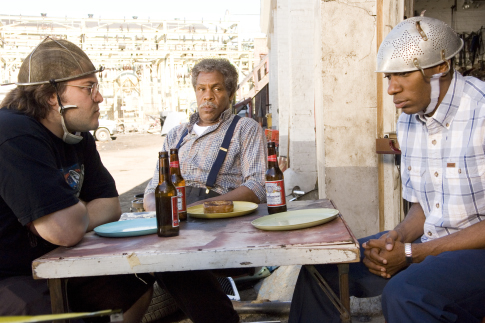
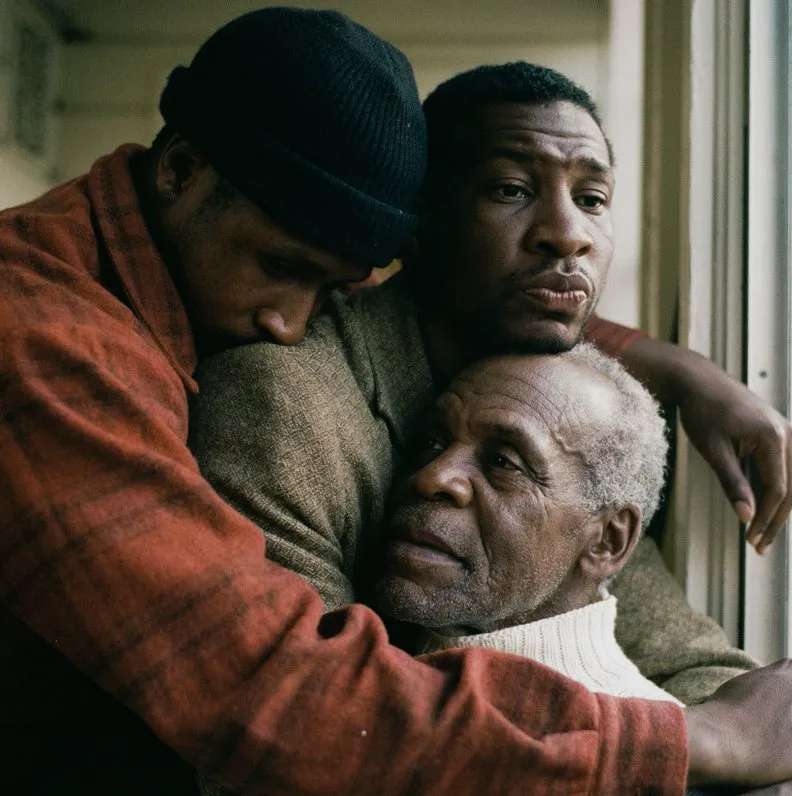
Some years ago, HILOBROW friend Greg Rowland pointed out that the 1990 movie Dances With Wolves ought to be regarded as a sentimental remake of the 1970 revisionist Western Little Big Man. The series FIRST TIME AS COMEDY will offer additional examples of this recursive (and often, though not always middlebrow) syndrome.
FIRST TIME AS COMEDY: SUPERDUPERMAN vs. WATCHMEN | WILD IN THE STREETS vs. PREZ | EMIL AND THE DETECTIVES vs. M | THE SAVAGE GENTLEMAN vs. DOC SAVAGE | GULLIVAR JONES vs. JOHN CARTER | THE PHONOGRAPHIC APARTMENT vs. HAL | HIGH RISE vs. OATH OF FEALTY | JOHNNY FEDORA vs. JAMES BOND | MA PARKER vs. MA BARKER | DARK STAR vs. ALIEN | SHOCK TREATMENT vs. THE TRUMAN SHOW | JOHNNY BRAVO vs. ROCK STAR | THE FUTUROLOGICAL CONGRESS vs. THE MATRIX | CAVEMAN vs. SASQUATCH SUNSET | LITTLE BIG MAN vs. DANCES WITH WOLVES | THE LAST BLACK MAN IN SAN FRANCISCO vs. BE KIND REWIND | LEN DEIGHTON vs. LEN DEIGHTON.
vs. BE KIND REWIND
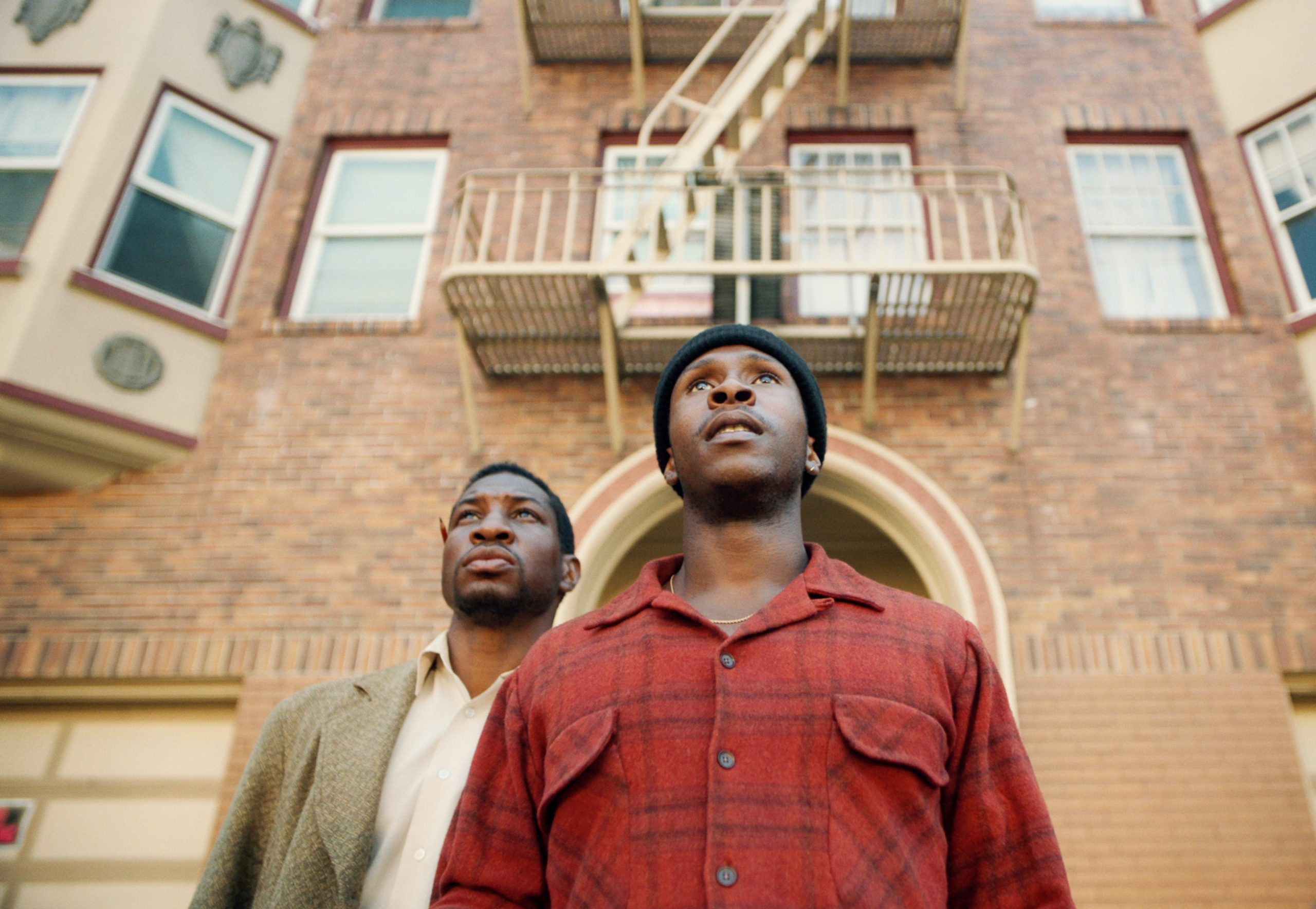
Joe Talbot’s The Last Black Man in San Francisco, an artsy indie film whose black protagonist, a soulful skateboarder played by Jimmie Fails (who co-wrote the story, which is loosely based on his own life), struggles to reclaim his grandfather’s charismatic Victorian house in a thoroughly gentrified San Francisco neighborhood, was received rapturously at the Sundance Film Festival. First-time feature director Talbot won the Directing Award (U.S. Dramatic); he also won a Special Jury Award for Creative Collaboration (U.S. Dramatic) for his collaboration — with Fails, I assume. Talbot won other Best Debut and Best Director awards too, from festivals and film critics’ associations across the country and worldwide.
There’s plenty to admire about The Last Black Man in San Francisco, including Adam Newport-Berra’s cinematography, Emile Mosseri’s score, and sharp performances by Tichina Arnold, Rob Morgan, Mike Epps, and Danny Glover. Talbot’s work as director and story teller, however, I find less impressive.
I’m not critiquing Fails’s life story, which is a compelling and sorrowful one: Until he was three, Fails lived in a Victorian house that his grandfather owned in San Francisco’s predominantly Black middle-class Fillmore district. After his grandfather died, the house was foreclosed on; Fails spent the remainder of his childhood in foster care and public housing. Talbot, a childhood friend of Fails’s, wasn’t wrong when he decided that there was a powerfully affecting story about gentrification’s reproduction of racial inequality to be told here.
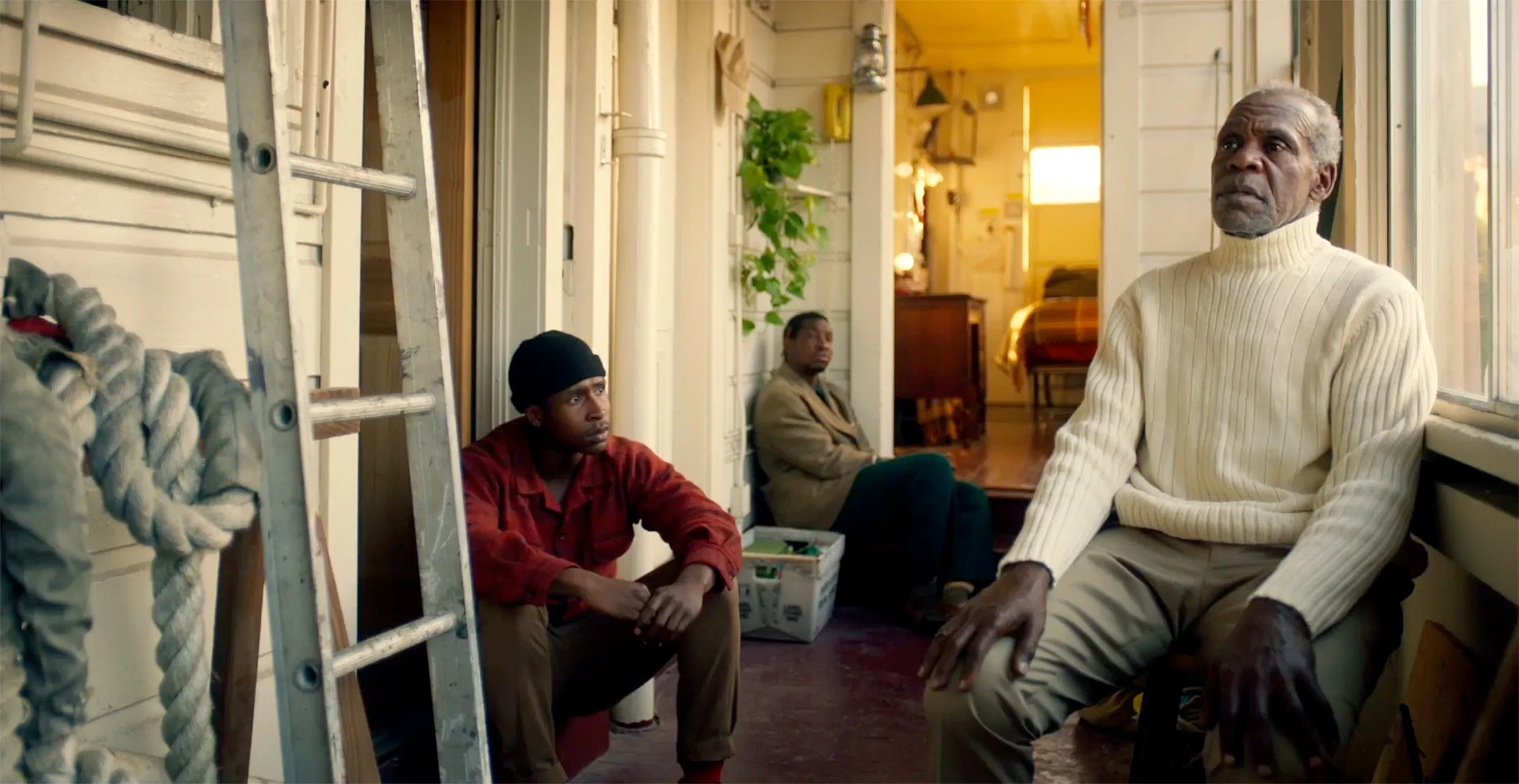
Jimmie (Fails) lives with his friend Mont (Jonathan Majors), in a tiny house owned by Mont’s blind, film-loving grandfather Allen (Danny Glover) in San Francisco’s Bayview–Hunters Point district. Jimmie is obsessed with family lore about the house in which he grew up: His grandfather, he tells everyone, built it himself. Mont, meanwhile, is a gifted artist and playwright; he fills notebooks with exquisite drawings, and constantly dreams up one-man stage shows. Each day as they wait for the bus to their menial jobs, the two young men observe various states of change in the city and protesters trying to stop it. Will they, too, protest gentrification?

We’ve met the likes of Mont — a brooding, directionless young person gifted with extraordinary, self-taught skills — before. He’s Will, in Good Will Hunting; he’s all of the siblings in The Royal Tenenbaums. Whenever one encounters this sort of character, one has to wonder whether the story teller might be indulging in self-aggrandizing fantasy. Once we discover that Talbot and Fails were childhood friends, it’s hard not to “read” Jimmy’s artsy, story-telling friend as a self-aggrandizing version of Talbot himself. But Mont is black, while Talbot is not. So is this a version of blackface? Not exactly, but it’s cringey.
Jimmie can’t stop himself from returning to the now-gentrified neighborhood in which he once lived, and working to maintain his grandfather’s house — now inhabited by an elderly white couple who want him to stay off their property. Jimmie seems actually deranged, in these actions; but the sympathetic liberal viewer (like me) will naturally interpret what he’s doing as a kind of anti-gentrification performance art piece. Through these upkeep efforts, Jimmie is manifesting his desire to take possession of a home stolen from him by colonizers. Surely the universe will reward him for his selfless devotion and filial piety.
Indeed, the house’s white residents are forced out because of a family dispute over an inheritance. Jimmie and Mont break in and take over. (Jimmie’s Aunt Wanda — a bravura performance by Tichina Arnold — supplies them with the family’s furniture and heirlooms.) Now it’s a race against time. Will they manage to stage one of Mont’s shows (about the death of their friend Kofi, played by Jamal Trulove — who, in real life, had a decade earlier been framed by the SFPD for murder) in the house before craven realtors drive the soulful artists back into the streets? There’s plenty to admire and enjoy here, though the heavy-handed symbolism is oppressive.
As mentioned earlier, the film was much-acclaimed. Barack Obama rated it as one of the best films of the year; so did Rolling Stone. Manohla Dargis made the film a The New York Times Critics Pick and described it as “ravishing, haunting and exultant.” It’s difficult to find dissenting voices from the chorus of praise… except for two.
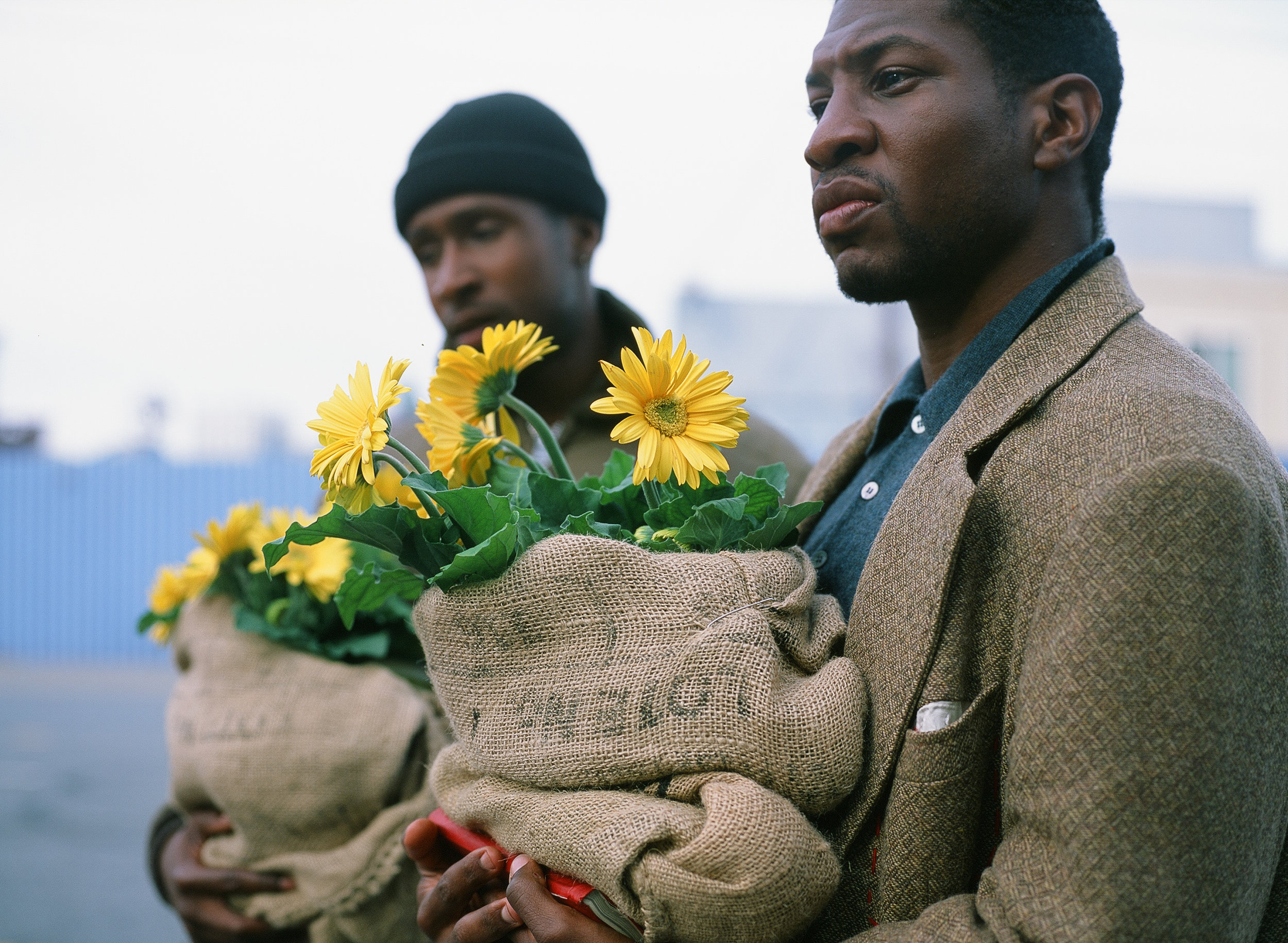
Writing in The New Yorker, Richard Brody called Talbot out as a middlebrow, i.e., someone sanding down the edges of high- and lowbrow alike:
In effect, Fails has handed over to Talbot the intricate and fragile treasures of a lifetime, and Talbot has melted them down and reshaped them into something smooth, shiny, and hollow. The movie is filled with dire and earnest substance: the onetime drug addiction of both of Jimmie’s parents, gun violence, homelessness, racism, the politics of real estate. Yet Talbot and [co-screenwriter Rob] Richert manage to reduce these ideas and experiences to baubles — such as one-liners, fleeting glimpses, and planted twists — that merely decorate the film.
Neither the movie’s discourse about gentrification, nor its uplifting message about art’s ability to speak truth to power and change lives, Brody carps, really work — thanks to Talbot’s sentimental, twee direction:
It’s a hangout film that suppresses the free-flowing verbal current of its protagonists’ deep connection, a city documentary that reduces the city to confectionary postcards, and — worst of all — it transforms its energetic and fiercely present cast of actors into mere signifiers of their own presence.
The movie displays little interest in the complexities or techniques involved in making art. Brief scenes of Mont doing one-man rehearsals are among the best moments in the film, but here, too, Talbot cuts them to mere informational snippets.
“The film is a prime example,” Brody laments, “of the rigid conventions that are endemic to independent filmmaking, or, rather, to the indie-brand cinema that is exemplified by the Sundance Film Festival.” I couldn’t possibly agree more.
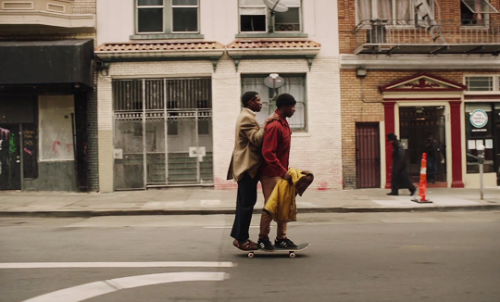
Writing in The Guardian, Benjamin Lee also complains about the movie’s high-middlebrow over-earnestness, sentimentality, and preciousness:
There’s a tendency to fall into an overkill of twee, the film sometimes feeling too deliberate and overstyled.
It’s a shaggy, wistful film that acts as a heartfelt tribute to both a city and a friendship and when the cutesy quirk that surrounds it is dialled down, we’re able to appreciate the underpinning earnestness. There’s reality and heart stirring underneath the artifice, I just wish more of it had been allowed to shine through.
PS: Lee is the only critic, as far as I can ascertain, who made the connection that I did — within the first few minutes of watching The Last Black Man in San Francisco — to its serious-yet-funny, non-middlebrow predecessor:
At times the film recalls a far less manic Be Kind Rewind, both films mourning a sense of community and spearheaded by characters desperate to bring it back (both films also happen to star Danny Glover).”
Right! Which brings us to…
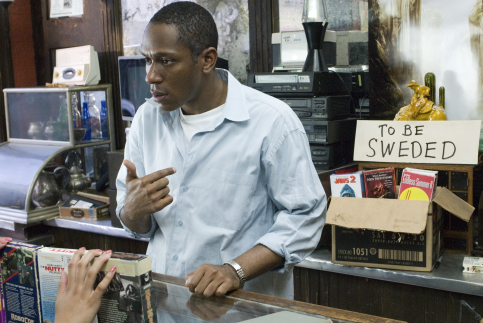
Be Kind Rewind is a 2008 indie buddy comedy written and directed by Michel Gondry. Known (like fellow music video director turned indie movie director Spike Jonze) for his inventive, dream-like visual effects, Gondry had previously directed and co-written, with Charlie Kaufman, the much-acclaimed Eternal Sunshine of the Spotless Mind, followed by The Science of Sleep.
Mike (Mos Def) is a sweet, hapless, directionless young man who’s been raised by Mr. Fletcher (Danny Glover), the movie-loving owner of VHS rental store that’s fallen behind the times. In fact, the charismatic building that Mr. Fletcher owns in a gentrifying Passaic, N.J., is soon to be demolished to make way for an upscale condo development. Mr. Fletcher heads off on a week-long scouting mission to understand why Blockbuster-type chain video stores (now switching to DVDs) are so successful; while he’s away, Mike’s friend Jerry (Jack Black), a hyperactive, somewhat demented car mechanic, gets himself “magnetized” during a conspiracy-driven sabotage attack on an electrical substation — and inadvertently erases all of the store’s VHS tapes.
When Miss Falewicz (Mia Farrow), a friend of Mr. Fletcher’s and one of the store’s few remaining loyal customers, asks to rent Ghostbusters, which she’s never seen, Mike inserts the store’s erased Ghostbusters into an ancient video camera. “I’ll be Bill Murray; you be everyone else,” he tells Jerry as they hustle to the local library to recreate the movie’s iconic opening scene, using coat hangers and Christmas tinsel as special effects. In need of costumes and a leading lady, they shanghai Alma (Melonie Diaz), who works at a dry cleaners.
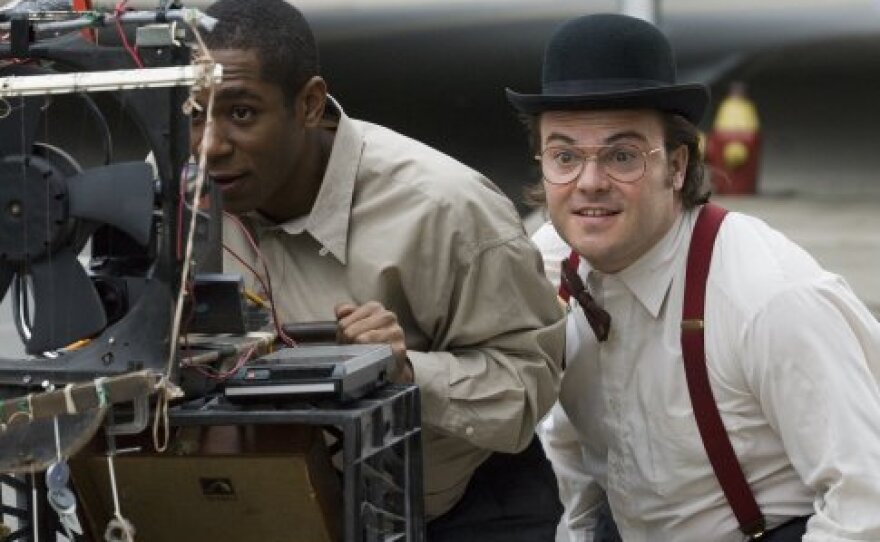
The trio’s quickie, absurdist yet loving adaptations of this and other big-budget movies are a love letter to cinema and simultaneously a critique of Hollywood. Their special effects — a pizza, for example, used to represent a pool of blood underneath a murdered person’s head — are delightful. There’s a Baudrillardian bite to this silliness: If the “precession of simulacra” robs the world of its charm, then charming art-making like Mike, Jerry, and Alma’s can subversively reveal to us how simulacra-ized life has become.
Don’t take my word for it: Check out the ingenious sight gags during the moviemaking montages that make up the movie’s middle section, and something will shift in your brain. You’ll wonder: When did Hollywood stop being fun? What sorts of damage has it been doing to our imaginations?
As if in response to this threat to their livelihood, Hollywood’s major studios send a lawyer — Sigourney Weaver, in a villainous cameo — who oversees the (literal, bulldozer-enabled) crushing of our heroes’ dreams. Can Mr. Fletcher’s building and business, and the soul of Passaic itself, be saved? Might the entire community come together to make one more movie? The answer to the latter question is, of course, “Yes.” As for the former, we’re left wondering.

Most critics don’t think much of this movie. A. O. Scott proved an exception, calling it “inviting, undemanding and altogether wonderful.” And Peter Bradshaw, writing in The Guardian, echoes my own response to Be Kind Rewind:
As Jerry, Mike and Alma become enthused by their childlike, primitive industry, it begins to resemble the early days of Hollywood itself in the orange groves, with the cheesy props and hand-cranked cameras. Part of what’s funny is that you know, in your heart, that the silly cardboard costumes and stunningly ingenious mock-ups would in fact take months to make. They are a simulacrum of homemade, and it is this fabricated fabrication which is beguiling.
“Fabricated fabrication” is a Baudrillardian-inflected concept. There’s a kind of jiu-jitsu at work in movies and other high-lowbrow works of art like Be Kind Rewind. Ingenious. Beguiling. Funny. Count me in.
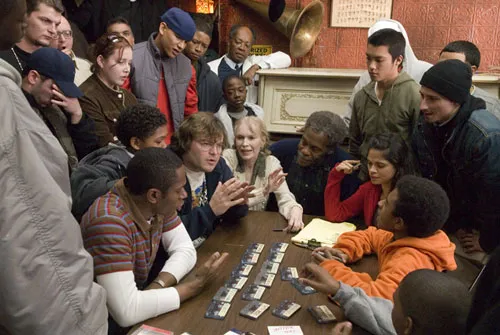
Gondry’s comedy shares many of key elements (not just Danny Glover) with the later, non-comedic The Last Black Man in San Francisco. Gentrification, and art’s ability to speak truth to power and change lives, are the themes of Be Kind Rewind. But this is a high-lowbrow rather than a middlebrow film, so it’s simultaneously serious and goofy without ever being earnest. It is sentimental and melancholy, for sure, but in a wonderful, mushy Capra-esque way. It’s never twee or precious. It’s a low-resolution artwork that expects a lot from the viewer; we are invited to participate imaginatively; we aren’t being lectured to or preached at.
In both movies, Danny Glover’s character is a lovable character who requires assistance, even protection, that he’s too stubborn and proud to accept. In Be Kind Rewind, however, he has agency; in a bumbling way, he attempts to solve his own problems. Though he fails in this effort, at least his quixotic mission is enlightening and inspirational — his analysis of what it takes for a video rental business to succeed is a caustic one. In The Last Black Man in San Francisco, by contrast, Glover’s character is charismatic but helpless. We pity him — which is precisely what his Be Kind Rewind character wants to avoid.
If the outsider artist sidekick character Mont is a version of Joe Talbot, then is the outsider artist sidekick character Jerry a version of Michel Gondry? Perhaps! But (a) he’s a white character, and (b) he’s portrayed as an eccentric grown-up child, not a tortured melancholic visionary. See the previous installment of this series on Little Big Man vs. Dances with Wolves. If a white man must be inserted into a non-white story, it helps to make him a crackpot, a scoundrel, a pain in the ass, a clown. Not a savior.
The anti-middlebrow critic Dana Stevens, writing about Be Kind Rewind for Slate, grouched that the movie “is perhaps best understood as a 12-year-old boy: You want to give it a hug and then yell at it to pick up after itself.” She prefers Gondry’s collaborations with Charlie Kaufman, and so do I. But (like Stevens) I also appreciate how “playful, endlessly imaginative, and willing to try anything” Gondry’s movie is. High-lowbrow productions are often at least partially stoopid; but this sort of thing, one hears, is not what high-middlebrow Sundance audiences are looking for. They’re missing out!
MORE FURSHLUGGINER THEORIES BY JOSH GLENN: SCHEMATIZING | IN CAHOOTS | JOSH’S MIDJOURNEY | POPSZTÁR SAMIZDAT | VIRUS VIGILANTE | TAKING THE MICKEY | WE ARE IRON MAN | AND WE LIVED BENEATH THE WAVES | IS IT A CHAMBER POT? | I’D LIKE TO FORCE THE WORLD TO SING | THE ARGONAUT FOLLY | THE PERFECT FLANEUR | THE TWENTIETH DAY OF JANUARY | THE REAL THING | THE YHWH VIRUS | THE SWEETEST HANGOVER | THE ORIGINAL STOOGE | BACK TO UTOPIA | FAKE AUTHENTICITY | CAMP, KITSCH & CHEESE | THE UNCLE HYPOTHESIS | MEET THE SEMIONAUTS | THE ABDUCTIVE METHOD | ORIGIN OF THE POGO | THE BLACK IRON PRISON | BLUE KRISHMA | BIG MAL LIVES | SCHMOOZITSU | YOU DOWN WITH VCP? | CALVIN PEEING MEME | DANIEL CLOWES: AGAINST GROOVY | DEBATING IN A VACUUM | PLUPERFECT PDA | SHOCKING BLOCKING.
